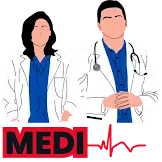Keywords:
INTRODUCTION
We take great pride in offering a functional download of the latest Scully’s Handbook of Medical Problems in Dentistry. Our website provides a wide range of free PDFs, videos, ebooks, and other valuable content that is often challenging to find independently.
Within this website, you will discover valuable downloads that are exceedingly rare to come across on your own. Our primary objective is to provide top-notch quality products to each and every visitor who accesses our website.ABOUT THE CONTENT
This text offers an authoritative account of general medical and surgical conditions as they apply to the practice of dentistry and oral healthcare. Now established as the standard reference on the subject, Scully’s Medical Problems in Dentistry is essential for students learning for the first time or practitioners needing to keep up-to-date with their knowledge.
"This remains an excellent comprehensive textbook bringing together relevant information into one place. It is a book to use for reference, rather than an; end-to-end read, but it continues to fulfil its function amply in the increasingly complex world of the medical-dental interface." Reviewed by Dr Mike Pemberton, Consultant in Oral Medicine, Dental Updatem, Sept 2014
"...an extremely valuable source of information that should be in the armamentarium of any dental professional..." Reviewed by European Journal of Orthodontics, Feb 2015
"... seems as close as could be to a completely comprehensive overview of common and uncommon medical problems and their dental relevance".Reviewed by Bex Stockton on behalf of BDJ Student, February 2015
Key Features
- Helps understanding of the relevant illness as identified from the patient’s history, physical examination and investigations;
- Shows readers how to present a succinct and, when appropriate, unified list of all problems that could influence oral health care and formulate a diagnosis/treatment plan for each problem;
- Emphasises the need to appreciate issues of access and informed consent, preventive oral health care and the avoidance of harm;
- Enables the reader to develop strategies to identify patients at risk of medical problems, to assess the severity of those risks and, where necessary, to recognize the need for referral;
- Places emphasis on good communication between all health-care professionals, and between HCPs and patients;
- Emphasises the need to take into account people’s cultural needs and preferences as well as deal with patients who may have additional needs such as physical, sensory or learning disabilities;
- User-friendly format allows ease of access to information whether for exam revision purposes or for a specific issue confronting staff in a busy clinical environment.
- Includes an array of new disorders ranging from hypersensitivity syndrome to neuropathic pain;
- Discusses recent updates in pharmacology and other aspects of medical intervention, including the use of biological therapies;
- Explores new areas such as cosmetic and other implants, dental materials hypersensitivity, drugs and dietary interactions and new aspects of alternative medicine;
- Other issues include elder maltreatment, care of vulnerable people, treatment of sexual minorities, new substance abuse and self-harm;
- Explores the link between periodontal infection and various systemic diseases;
- New national and international guidelines, selected recent references and up-to-date websites.
TABLE OF CONTENT
1 Health
Health promotion
Health hazards
2 Healthcare
Medical history
Preoperative assessment
Preoperative planning
Analgesia and behaviour management
Consent
Culture
3 Main emergencies
Emergency procedure
Management of common emergencies
4 Age and gender
Children
Men’s health
Bladder cancer
Prostate cancer
Prostate hypertrophy
Testicular cancer
Older patients
Women’s health
Breast cancer
Cervical cancer
Ovarian cancer
Uterine cancer
Pregnancy
Menopause
5 System synopses
Cardiovascular
Aortic valve disease
Cardiac arrhythmias
Cardiac failure
Cardiomyopathies
Cerebrovascular accidents
Congenital heart disease
Endocarditis
Hypertension
Ischaemic heart disease
Mitral valve disease
Myocardial infarction
Rheumatic fever
Surgery
Thrombosis
Endocrine and metabolic
Acromegaly
Addison disease
Cushing’s syndrome
Diabetes insipidus
Diabetes mellitus
Hyperaldosteronism
Hyperparathyroidism
Hyperthyroidism
Hypoparathyroidism
Hypopituitarism (Dwarfism)
Hypothyroidism
Obesity
Gastrointestinal
Coeliac disease
Colorectal cancer
Crohn’s disease
Cystic fibrosis
Diverticular disease
Gastric cancer
Gastric ulcer (see Peptic ulcer)
Gastro-oesophageal reflux disease
Head and neck cancer
Irritable bowel disease
Oesophageal carcinoma
Peptic ulcer
Pancreatitis
Pancreatic cancer
Ulcerative colitis
Genito-urinary
Chronic kidney disease
Kidney cancer
Kidney stones
Nephrotic syndrome
Pyelonephritis
Haematological
Anaemia
Haemophilias
Leukaemias
Lymphomas
Myeloma (Myelomatosis, Kahler disease)
Neutrophil defects
Thrombocytopenia
Hepatic
Hepatitis
Liver diseases
Immunological
Allergies
Immunodeficiencies (Primary)
Lupus erythematosus
Scleroderma
Sjögren syndrome
Mental
Alzheimer disease (Alzheimer dementia)
Attention deficit hyperactivity disorder
Autism
Body dysmorphic disorder
Depression
Eating disorders
Mania
Obsessive-compulsive disorder
Panic disorder
Phobias
Schizophrenia
Self-harm
Mucocutaneous
Erythema multiforme
Lichen planus
Pemphigoid
Pemphigus
Skin cancers
Musculoskeletal
Ankylosing spondylitis
Gout
Osteoarthritis (Osteoarthrosis)
Osteogenesis imperfecta
Osteoporosis
Paget disease of bone
Rheumatoid arthritis
Rickets and osteomalacia
Neurological
Brain tumours
Epilepsy
Migraine
Multiple sclerosis (Disseminated sclerosis)
Myasthenia gravis
Parkinsonism
Trigeminal Autonomic Cephalgias
Trigeminal neuralgia
Respiratory
Asthma
Chronic obstructive pulmonary disease
Lung cancer
Pneumonia
Sarcoidosis
6 Trauma
Facial trauma
Head injury
Non-accidental injury
Spinal trauma
7 Infections
A range of infections
Candidosis (candidiasis)
Creutzfeldt-Jakob disease
Endocarditis (see Cardiovascular disease)
Gonorrhoea
Gonorrhoea
Herpes viruses
Healthcare Associated Infections
HIV/AIDS
Human papilloma viruses (HPV)
Syphilis
Tuberculosis
8 Chemical dependence (drug addiction: substance abuse)
Chemical dependence
Alcohol use
Amphetamine use
Cocaine and crack use
Ecstasy (methylene-dioxy methamphetamine) use
Lysergic acid diethylamide (LSD) use
Inhalant use
Legal highs
Marijuana use
Nicotine use
Opioid and heroin use
9 Therapeutic modalities
Adverse reactions to drugs
Anti-thrombotic agents
Biological therapies
Chemotherapy
Complementary and alternative medicine
Graft versus host disease
Haemodialysis
Immunosuppressive treatment
Implanted devices
Palliative and end of life care
Radiotherapy
Splenectomy
Steroids (corticosteroids)
Transplantation
10 Disability, vulnerability and impairment
Bedbound patients
Cerebral palsy
Clefts
Disability and impairment
Down syndrome
Hearing impairment
Learning disability and impairment
Paralyses (head and neck)
Paraplegia
Physically disabled patients (see also specific conditions)
Visual impairment
Vulnerable groups
Appendix: Normal test values
DOWNLOAD
If you want to encourage us in what we are doing for medical students that are facing difficulties to get these premium contents because of their financial barriers. Consider Donating to us.


